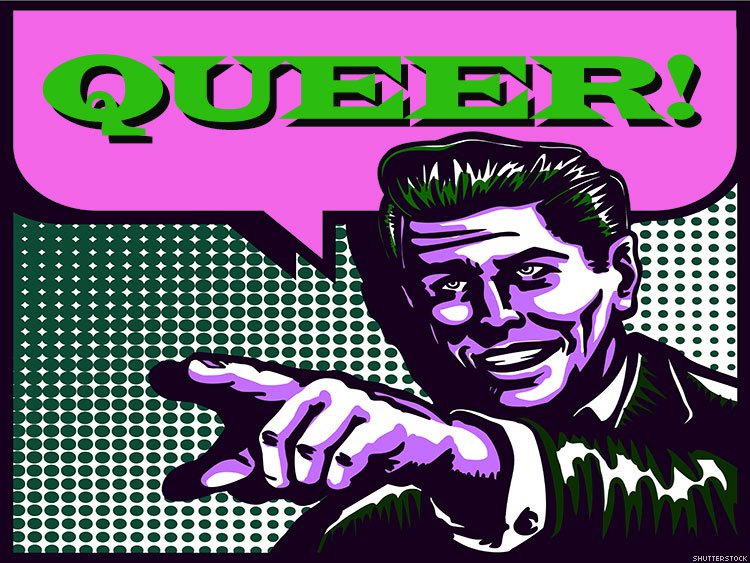Queer linguistics is defined as an extensive range of language studies related to the intersections of gender and sexuality in language use (Maree, 2015). Contrary to popular belief, queer linguistics is not simply the study of the language used by the lesbian, gay, bisexual, transgender and queer (LGBTQ) speakers. Instead, it is the application of ideas from the queer theory to the research on the language, providing an overview of the discursive formation of heteronormativity (Motschenbacher, 2011). Heteronormativity presumes that heterosexuality is the only sexual orientation existing and that heterosexuality is the norm. Also, it assumes that people are segregated into distinct and binary gender groups, male and female and that their gender dictates their roles in the society (Jackson, 2006). Queer linguistics talks about the sociolinguistic study of language use without regarding identity categories (Koch, 2008).
Queer theory is heavily influenced by feminist studies as well as gay and lesbian studies. However, unlike heteronormativity as well as gay and lesbian studies, queer theory is more inclusive and take into account any other kind of sexual acts or identities belonging to both the normative as well as the ‘deviant’ categories. Queer theory is different from gay and lesbian studies which focus mostly and only on gay and lesbians. Instead of simply focusing on lives and experiences of homosexuals, queer theory emphasizes on the mismatch between sex, gender as well as desire, which encompasses topics such as cross-dressing, gender ambiguity as well as gender corrective surgery (Jagose, 1996). Not only that, queer theory explores and contests that sexuality may be a result of social constructions and is subject to changes as a result of social interactions (Barry, 2017). Research on queer theory focus mainly in three areas, the examination of experiences of those who are considered non-heterosexual, those who are considered the ‘norm’ as well as how and why some experiences are treated as deviants (Dilley, 1999).
In addition, the queer theory displaces historical gay and lesbian studies by replacing them with gender and queer studies. It is preferable as compared to gay and lesbian studies as it includes the concept of performativity as well as the relationship between power and language (Koch, 2008). The queer theory also takes into consideration other sexualities as well as sexual orientations that were not discussed in the past research about gay and lesbian studies. In addition to sexualities that are seen as deviants, the queer theory talks about other people who feel marginalized and discriminated due to the standard social or sexual practices (Giffney, 2004). The queer theory provides a platform for individuals to define and express their personal sexual preferences which were denied due to heteronormativity (Cameron & Kulick, 2003). By allowing other sexualities to be discussed along with homosexuality and heterosexuality, it expands people’s knowledge and awareness on the other sexualities that are often misrepresented or underrepresented. The queer theory also shows that sexuality is not solely about homosexuality and heterosexuality, that there are other sexualities that exist in the society that may yet to have names. Also, it addresses issues of sexuality that are often avoided or not discussed in public discourse.
Not only that, queer theory explores the binarism of homosexuality as well as heterosexuality. It challenges the theory of heteronormativity and why heterosexuality is viewed and seen as the benchmark used to judge the other sexualities. Queer theory rejects the binary distinction between homosexuality and heterosexuality (Dilley, 1999). Heterosexuality is often seen as a norm in the society. Heteronormativity believes that the gender of humans is attached to certain roles in the society, and are expected to behave in certain ways. Certain genders are required to go through certain stages of life such as marriage, bearing and bringing up children (Cameron & Kulick, 2003). For example, if a couple is married, the husband is almost definitely seen as a heterosexual and a straight man. This affected the views the society has on homosexuality as well as the portrayals of homosexuality in the society. Homosexuality is often seen as the ‘deviant’ and the ‘different’ ones as they do not fulfill the presumed roles given to their genders. Queer theory questions the system and distribution of societal roles according to their genders. With that, queer theory helps to deconstruct the issues of sexuality in society, by revealing how some sexualities are seen as the ‘norm’ and the socially accepted ones as compared to the other sexualities. Thus, queer theory contributed to the research on sexuality by questioning the discrimination of certain sexualities such as lesbians and gays for not fulfilling their social roles simply because they have a differing sexual orientation as that of the ‘norm’, the heterosexuals, under the theory of heteronormativity.
The queer theory also challenges the idea of power and marginalization in the society while examining language use (Koch, 2008). Queer theory also talks about how certain ways of speaking are marginalized and discriminated. Certain ways of speaking are used to define people of the higher power. Power is critical in determining the way one speaks. People with certain power speaks in a certain manner. One good example would be how certain ways of speech and words are gendered, and are seen as more ‘masculine’ or ‘feminine’ than other words. While power is one factor that affects one’s way of speech, sexuality and sexual orientation are factors influencing language use too. Just like how sexuality and sexual orientation affects how a person speaks, how a person speaks has an effect on how people view the person’s sexuality and sexual orientation. It is safe to say that all these ideas about language, sexuality as well as queer theory intersect and interlink with one another. Queer theory also looks at how heteronormativity or homosexuality is embedded in certain discourses while examining the language used in these discourses. Queer theory examines popular and academic texts, comparing the ‘norm way of speech’ to the marginalized texts (Dilley, 1999). With that, queer theory contributed to the sociolinguistics aspect of language, specifically in areas concerning sexuality (Koch, 2008). This allows us to examine how and why certain languages or way of speech are engaged by certain groups with certain sexualities or sexual orientations.
In conclusion, despite criticisms on queer theory saying that it robs gays and lesbians of their distinctiveness, queer theory still serves as an important set of theories and ideas as it deconstructed sexuality in a society by challenging the ‘normal’ and presenting people with other underrepresented or misrepresented sexualities that are not often talked about in public discourse. Queer theory’s contributions to research on both sexuality and language are so impactful and significant, and thus should not be neglected. Without queer theory, we are unable to express language and sexuality as these ideas and concepts are all interlinked and overlapping, and they intersect with one another as well.
REFERENCES
Barry, P. (2017). Beginning theory: An introduction to literary and cultural theory. Oxford University Press.
Cameron, D., & Kulick, D. (2003). Language and sexuality. Cambridge University Press.
Dilley, P. (1999). Queer theory: Under construction. International Journal of Qualitative Studies in Education, 12(5), 457-472.
Giffney, N. (2004). Denormatizing queer theory: More than (simply) lesbian and gay studies. Feminist Theory, 5(1), 73-78.
Jackson, S. (2006). Interchanges: Gender, sexuality and heterosexuality: The complexity (and limits) of heteronormativity. Feminist theory, 7(1), 105-121.
Jagose, A. (1996). Queer theory: An introduction. NYU Press.
Koch, M. (2008). Language and gender research from a queer linguistic perspective: A critical evaluation. VDM Publishing.
Maree, C. (2015). Queer linguistics. The International Encyclopedia of Human Sexuality.
Motschenbacher, H. (2011). Taking Queer Linguistics further: Sociolinguistics and critical heteronormativity research. International Journal of the Sociology of Language, 2011(212), 149-179.


